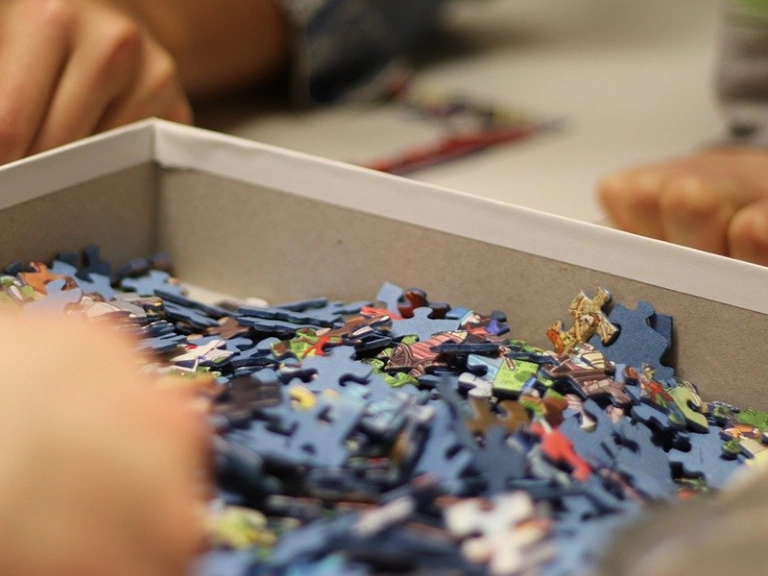
Engaging Young Minds with Board Games
The Role of Board Games in Child Development
Board games are one of the most important tools for cognitive and social development in children. They assist in developing critical thinking and problem-solving skills and also aid in memory retention. Furthermore, playing board games in a group encourages teamwork and communication, thereby enhancing social skills and promoting cooperation among children. Children develop their strategic thinking and decision-making skills by learning to navigate the rules and tactics of different games, many a time based on logic.
Historical Evolution of Children’s Board Games
It is a diverse history made up of cultural shifts and design changes that have been improving the board game style for children throughout the decades. Board games have come a long way over the centuries from the simple dice games in ancient times, through the medieval period when games like chess and checkers began to be played. The demand for board games aimed at children, including some with educational components reflecting information taught in schools, increased during the 20th century.
Fun and Educational Board Games for Different Age Groups
Choosing the right board game can be challenging given the wide array available on the market today. However, selecting age-appropriate games ensures that children are both entertained and intellectually stimulated.
Board Games for Preschoolers
The best board games for preschoolers aim to teach early game skills like counting, colour recognition, and basic strategy. Get games that are suited for very young children to introduce these concepts of taking turns and rules without a ridiculous amount of instruction — you know, like such classics as “Candy Land” or “Chutes and Ladders.” You will find many exciting colors and some great themes in these games that will fascinate a child and impart their basic skills.
Board Games for Elementary School Children
Board games are great to challenge elementary school age-kids’ growing minds while still having fun. “Monopoly Junior” or “Guess Who?” are great options because they force players to think strategically and step into the shoes (or, in some cases, the heads) of their opponents. In addition, they introduce fundamental math concepts, such as how to deal with money or probability, which at this point match perfectly with their learning agenda.
Board Games for Pre-teens and Teens
They never could have understood such concepts this young even if they played alongside their older camp-mates; by pre-teen and teen years, those light bulbs really started to go off in terms of understanding the nuances of strategy. Age group: 8 years and older Games: “Catan” or “Ticket to Ride” More complex planning and resource management are involved in these games, making them ideal for this age group. These games are both fun and a great way to get players to think critically about how to allocate resources, and their long-term strategy.
To sum up, board games provide a fun way to learn whether in school, work, business, or at home. Suba offers a selection of trending board games that are age-appropriate for kids, ensuring that their leisure time is filled with both enjoyment and opportunities for strategic thinking. Parents can choose from Suba’s best-selling board games, stimulating their children’s thinking activities while providing them with a fun and engaging experience.
Criteria for Selecting Quality Board Games for Kids
Selecting the right board game for children involves more than just choosing a popular title. It requires a careful evaluation of the game’s educational value and its ability to entertain.
Evaluating Educational Value

Educators assess the educational value of board games through their alignment with key developmental goals. Good quality board games will allow room for children to build, and use their critical thinking, problem-solving, and social skills. Find games that incorporate fun math, language, or science in their play. For example, games that involve counting, reading comprehension, or strategic planning can help reinforce classroom learning while being fun at the same time. Games that promote collaborative play also aid children in developing their communication and team working skills which are key to their growing as individuals.
Assessing Entertainment Factor
Sure, educational value matters like crazy, but so does being fun to watch. A board game should attract a child in a way that makes them continue to play. It can be accomplished by colorful illustrations, compelling storylines, or interactive elements that encourage children to wonder and dream. For some game designs, having different levels of difficulty or modes of play means children of all ages and abilities can be kept.
Suba’s Contribution to the World of Children’s Games
Suba has made significant strides in enhancing the landscape of children’s board games by introducing innovative products that blend education with entertainment.
Board Game Products from Suba
If you’re searching for engaging and educational board games, Suba is known for their innovative approach in creating games. Their products are designed to captivate young minds and promote the development of cognitive skills. With a focus on fresh mechanics and themes, Suba offers board games that are both fun and educational, providing a great way for children to learn while having a great time.
Exploring Suba’s Other Offerings
Outside of board games, Suba has also grown to offer a whole line of interactive learning toys from puzzles to more (yup, you guessed it) toys that all challenge kids to use their minds while having fun with the right tool. Services are typically targeted toward certain skill sets e.g., spatial reasoning or language acquisition, to help students through their developmental milestones. These services are usually more limited in scope and address particular skills like spatial reasoning or language acquisition, catering to specific developmental stages.
Thematic puzzles that provide children with exposure to new vocabulary encourage word recognition and pronunciation. Each puzzle includes illustrations that are colorful alongside some interactive components that language learners acquire easily and are fun for children. The use of colorful illustrations and interactive elements make these jigsaw puzzles easy and fun for children to learn a language.









